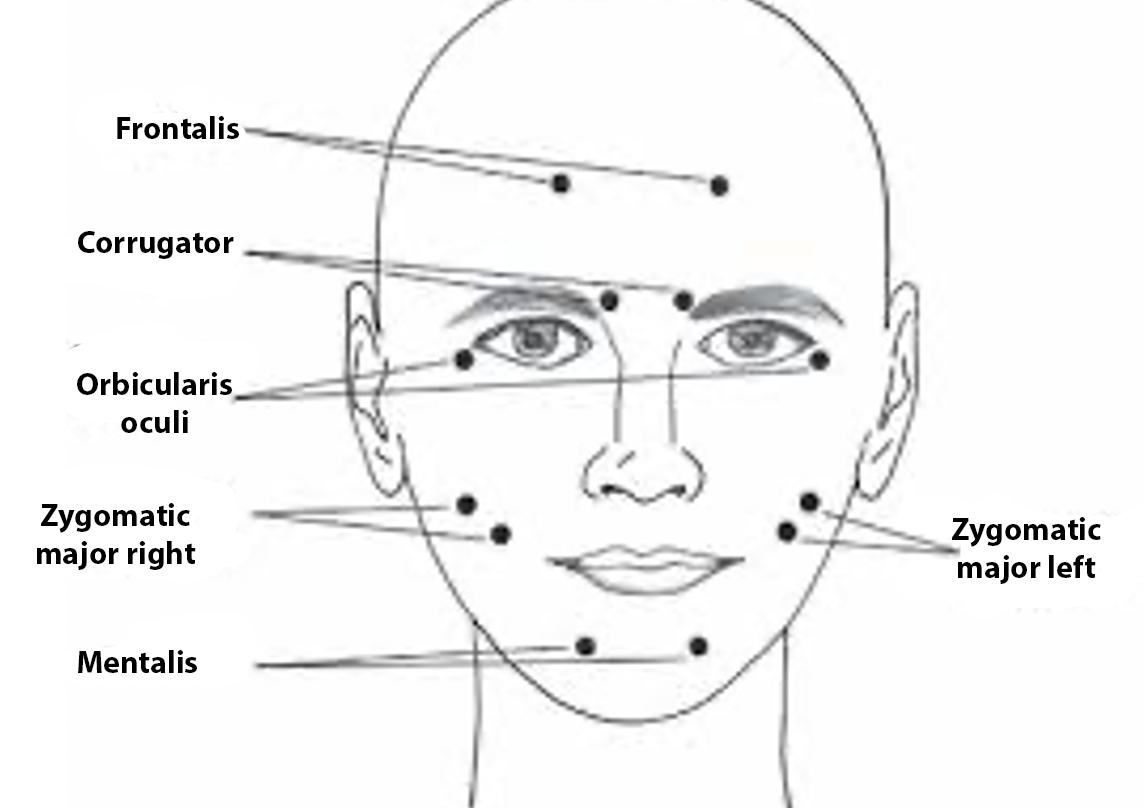Chapter 6: Measuring and Manipulating Emotions
Component Method
The component method was derived from Duchenne’s work. The goal of the component method is to split emotional expressions into specific action units or components (described described here in the basic versus social constructivism chapter). Supporters of the component method believe that each emotion is displayed with a unique combination of action unit changes. Ekman and Friesen’s (1978) Facial Action Coding System (FACS) is the most common type of component method utilized. When researchers use the FACS, they code participants’ facial expression for changes in AUs AND changes in intensity of each AU change.
For example, let’s say a researcher is coding facial expressions. They find that action units 9 (Nose Wrinkler), 15 (Lip Corner Depressor), and 16 (Lower Lip Depressor) change, which are associated with the disgust emotion. Then, they would code each action unit change for intensity on a 5-point scale (1=barely noticeable to 5 = maximum intensity). When the action units 9, 15, and 16 are coded as 5, they could conclude the participants was experiencing a highly arousing disgust emotion. Today, some advantages to the component method exist. Modern computer technology can quickly and accurately code these facial expressions (whereas in the 1970’s the coding was completed manually). This method can help us to identify when people experience certain emotions and measures how emotions in the face change over time. Some cons are that manual coding and training research assistants costs time and money. The methodology only captures changes visible to the naked eye.
Today to measure nonvisible changes in emotional expressions, facial electromyographic activity (EMG) is combined with the component method. Using sensors located on specific facial muscles, the EMG measures the electric current that occurs when facial muscles change. Typically, sensors measure changes in the following muscles: corrugator (a frown), right and left zygomatic (a smile), and the orbicularis oculi (muscles underneath the eyes). Table 1 displays the muscles associated with each emotional expression. Figure 4 displays the location of these three muscles on the face.
Table 1
| Type of Emotional Expression | Facial Muscle Changes |
|---|---|
| Dunchenne Smile | Orbicularis Oculi + Zygomatic |
| Pan-Am Smile | Corrugator + Zygomatic (but less change in zygomatic than Duchenne smile) |
| Disgust | Orbicularis Oculi + Corrugator |
Figure 4
Location of Common Facial Muscles Measures in Facial EMG

Long Description
The image is a black and white anatomical diagram of a human face with marked points and labels indicating specific facial muscles. The face is shown in a frontal view. Black dots connected by lines point to various facial locations. The labeled muscles are as follows: “Frontalis” near the forehead, “Corrugator” near the eyebrows, “Orbicularis oculi” around the eyes, “Zygomatic major right” on the right cheek, “Zygomatic major left” on the left cheek, and “Mentalis” above the chin. Each muscle is identified with a horizontal line extending from the label to the corresponding dot on the face.
Facial EMG provides a more accurate way to measure changes in facial muscles, and unlike the FACS, can identify nonvisible changes in facial expressions. One disadvantage to using facial EMG in a study is that the presence of electrodes is invasive and might change the muscles or even elicit a different emotion.

